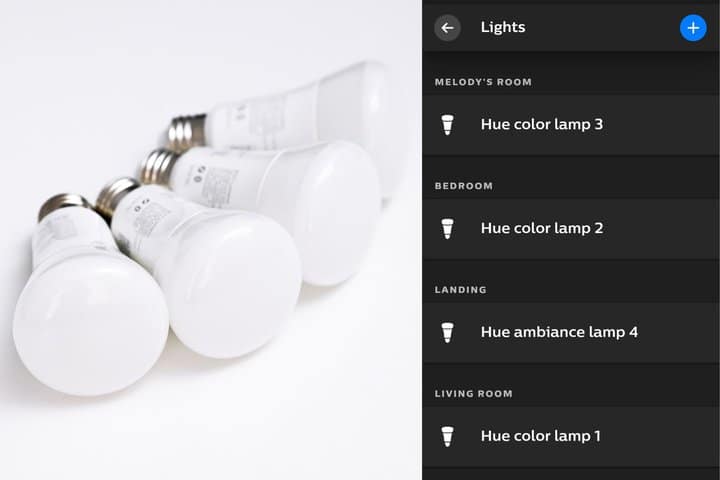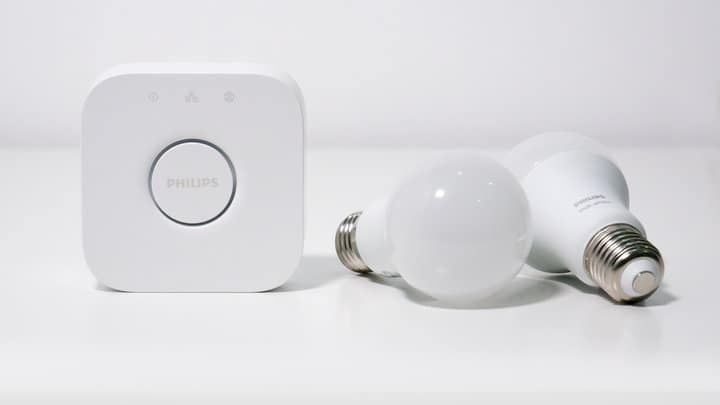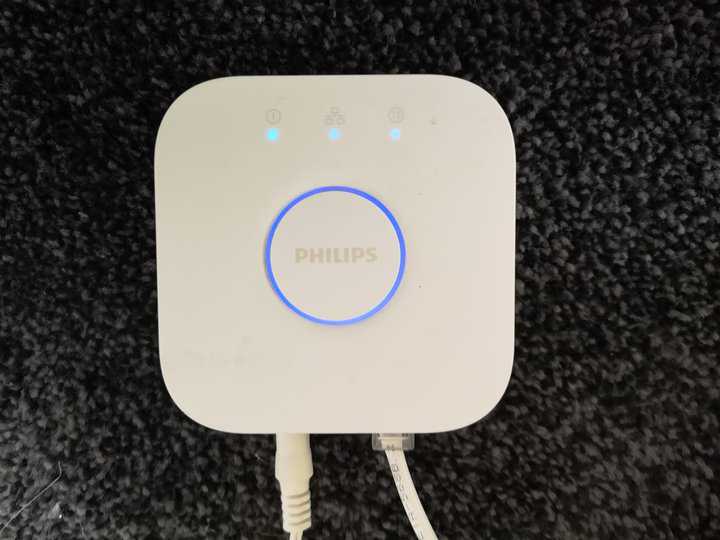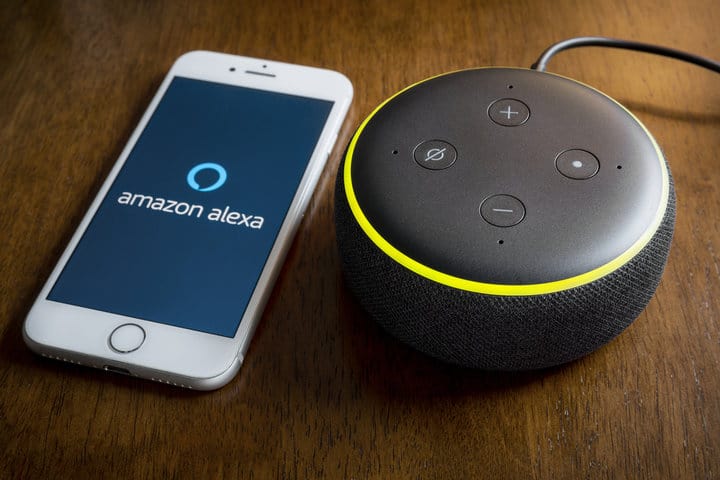Smart lights are one of the best parts of a smart home.
They give you complete control over your home’s lighting, all from a handy app on your smartphone or tablet.
Plus, if you have a voice assistant speaker in your home, such as a Google Home or Alexa, you can turn the lights on and off with your voice.
If you start getting into the depths of ‘If-This-Then-That’ (IFTTT), you can set up some really cool routines – like having the lights flash when your pizza delivery is imminent.
One of the biggest manufacturers of smart lights is Philips. Their Hue range traditionally came with a ‘Bridge,’ which had to be plugged into your Wi-Fi router.
But more recent bulbs have launched that say they don’t always need the bridge – how does that work?
Modern Philips Hue lights with Bluetooth technology can be controlled directly via Bluetooth, providing you’re in range. You’ll still need a Hue Bridge if you want to control the lights when you’re away from home.
To explain this in a little more detail, let’s take a look at:
- How to use Hue lights without the bridge
- How to connect your lights without a bridge
- Whether you can still use Alexa to control lights without a bridge
How Can I Connect Philips Hue Lights Without Bridge?

Connecting to your Hue lights using the Hue Bluetooth app is extremely simple.
Start by downloading the Hue Bluetooth app if you don’t already have it.
You’ll need to set up an account if it’s your first time using Hue. Also, make sure Bluetooth is enabled on your phone or tablet.
Then, add your new light bulbs to the fixture, and switch them on. They’ll turn on immediately and work.
On the app, press the Settings cog at the bottom right and then the blue plus button next to ‘Lights.’
You can search for bulbs by serial number or just search for them. Press the search option.
Your device will then scan for bulbs. As it identifies them, it will make the bulb flash.
You can then name the bulb and assign it to a room within the app. This is useful if you want to simultaneously control all the lights in a room.
Why Its Worth To Consider Bridge?

Many people think that Philips Hue bulbs use Wi-Fi to control them – after all, for anyone who doesn’t know much about smart home tech, wireless signals are Wi-Fi, right?
Not quite. There are other types of wireless signals used in many smart techs, one of which is ZigBee.
It’s a low-power signal working on a different wavelength to Wi-Fi, meaning it won’t interrupt your normal Wi-Fi signal.
Your phone can’t communicate with ZigBee, it doesn’t have the technology.
So instead, you need to plug a Hue Bridge into your Wi-Fi router so it can communicate with the bulbs.
When you press a button on your phone to turn your lights on, the phone sends that over Wi-Fi to the Hue Bridge plugged into the router.
Once it has received that signal, the bridge sends a signal to the bulb via ZigBee, telling it to switch on.
So the bridge is aptly named – it’s the bridge between your lights and your Wi-Fi app.
Philips Hue lights were first launched in 2012, but in 2019 the bulbs all received an update that added Bluetooth technology to them.
This means you don’t need a Hue Bridge plugged into your router to control your lights.
As long as you are in Bluetooth range, which is 30 feet, you can control the lights directly from your phone using Bluetooth with no bridge needed.
If you don’t know whether your Hue lights have Bluetooth tech, check the box they came in.
It’ll have a Bluetooth logo on the top-right of the front of the box.
Bluetooth Vs Bridge Connection

Using Philips Hue without a bridge is a little bit easier – there’s one less device to plug in, and you don’t need to be close to the bridge to set the app up.
But, the Hue Bridge gives you advantages over a Bluetooth connection.
Number of bulbs
If you’re controlling your bulbs via Bluetooth, you’re limited to only having 10 bulbs connected to the app simultaneously. This might not be enough for many homes.
The Hue Bridge’s official limit is 50, although people have reported getting up to 60 working.
Range
You can only control Hue lights via Bluetooth within 30 feet. For most homes, that’s enough distance, but not all homes.
The Hue Bridge creates the ZigBee network, meaning each bulb acts as a relay – so your range is massively amplified.
Remote Control

Using the Hue Bridge means you can control the lights when you aren’t at home.
If you’ve accidentally left a light on or want to switch the lights on every now and then to make it look like you’re home, you can only do this with the Hue Bridge.
Voice Control
If you want to control your Hue lights using voice control, you’ll need a Hue Bridge – although some Alexa speakers work without one.
More on that below.
Geofencing
Geofencing is where you can set up a geographical boundary around your home and set up your lights to automatically turn off when you leave that boundary.
That way, you never have to worry about forgetting to turn your lights off. This is only possible with the Hue Bridge.
Custom Scenes
If you have a Hue Bridge, you can set custom scenes, which allows you to store preferences for the lights within a room for the perfect ambiance.
How To Use Philips Hue With Alexa Without Bridge?

Usually, to control Philips Hue with your voice, you need a Hue Bridge. However, selected Echo devices to have bridge technology built in.
Check the spec of your Echo, but generally, it’s the latest Echo Plus, the Echo Show, and the Echo from the 4th gen onwards. If you download the Hue Skill, these will work as a bridge.
You do this from the Alexa app, which lets you search for the bulbs once you have installed the skill. Or you can even use a voice command – “Alexa, find my devices.”
They can’t do everything – you can’t use geofencing or custom scenes – but you can also control your lights remotely and with your voice.
So if you want to save the $50 or so that a Hue Bridge costs and already have one of these speakers, you’re in luck.
Final Words
The Hue Bridge isn’t cheap, although you can sometimes buy it in a bundle with Hue bulbs.
If you want to save money, though, and you’re planning on using 10 or fewer bulbs in your home, they will work fine with Bluetooth.
But you will lose some of that functionality, including voice control and out-of-home control.
Does that matter to you? Do you use voice controls if you already have Hue lights?

